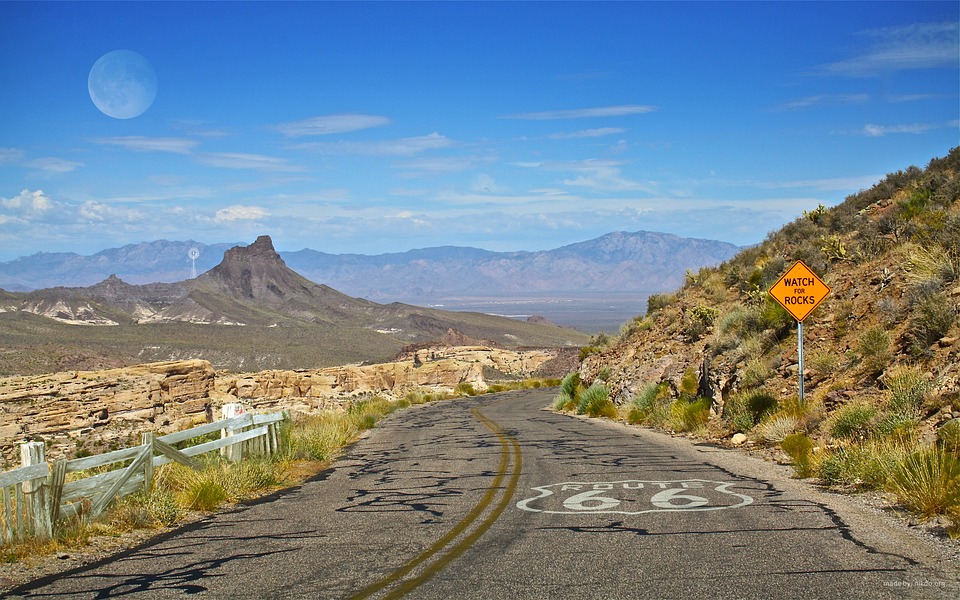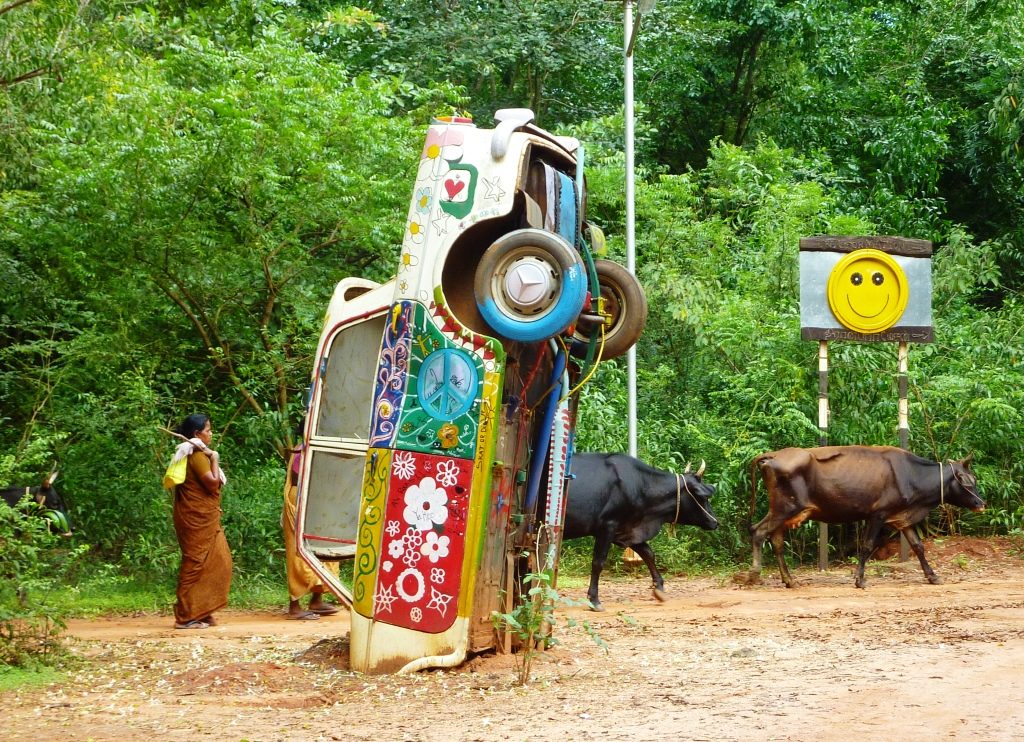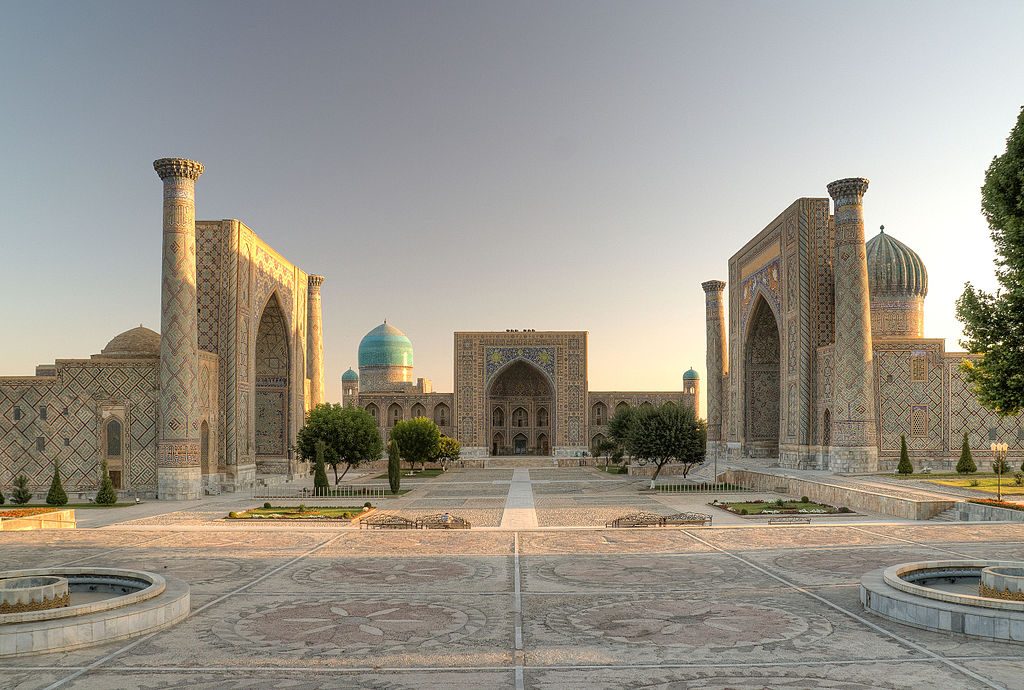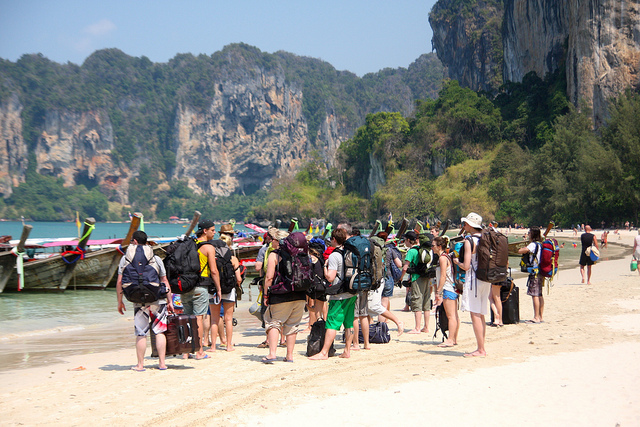Many of these epic historical and cultural routes have shaped the world as we know it. Whether you’re exploring the ghost towns of Route 66 or rolling along the tracks from Russia to China on the Trans-Siberian Express, embark on one of the world’s most interesting journeys for the overland adventure of a lifetime.
1. Find out what happened to Route 66
In the history of the United States, no road symbolises the American dream quite like Route 66. In the 1920s, entrepreneurs Cyrus Avery and John Woodruff envisioned a highway that would connect America from the east to the west socially and economically. The highway would create opportunities for industry and business, as well as connect small rural and urban towns to a major road.
Route 66, also known as the Mother Road and the Main Street of America, spanned 3940 kilometres (2448 miles) from Chicago to Los Angeles and passed through eight states and three different time zones. Even though the 1950s were a prime time for this famous route, as Americans bought up cars and hit the road dreaming of an adventure, in 1956, the Interstate Highway Act was signed, marking the beginning of Route 66’s decline as other more direct routes were built by planners. By the mid-1980s, Route 66 was decommissioned, and even as the locally run outlets along the famous road began to disappear, the legend of the highway persisted.

Over the decades, American novels, films, songs and other popular culture have added to this historic highway’s legend. Portions of what’s left of America’s Mother Road through Illinois, Missouri, New Mexico, and Arizona are acknowledged as the Historic Route 66 by National Scenic Byway, allowing for it to be returned to some maps and live on.
Today, you can drive through most of the original route and learn about what happened to it. Discover the tiny towns, motels and attractions scattered along the way, many of them frozen in time, as though they were waiting for someone to wake them again.
2. Discover the modern Hippie Trail
Once upon a time, before conflict threw the Middle East and parts of South Asia into turmoil, the voyagers who shaped so much of modern tourism, travelled across the region from the west to the east in a bid to enlighten themselves, immerse in cultures, score some marijuana and have a good time!
The Hippie Trail is a famous overland adventure from the mid-1950s to 1970s where spirited individuals took the cheapest forms of transportation across Europe and Asia. They would hop on board buses and trains or hitchhike from London or Amsterdam and head off for destinations like Turkey, Iran, Afghanistan, Pakistan, Nepal and India.

During its heyday from the 1950s-1970s, important hubs along the Hippie Trail would have hotels and restaurants crammed with visitors from other parts of the world revelling in the lifestyle associated with this journey, spirituality and a good time. It was seen as an alternative form of tourism and allowed travellers to connect with locals instead of just sightseeing.
In the 1970s, political tension and security issues led to a decline of the route. It may not be possible to travel the entire 5500-kilometre (3420-mile) Hippie Trail today, but there’s been somewhat of a revival of certain parts of the route, there are some commercial trips through Europe and Asia which bypass conflict zones. Many iconic spots from the Hippie Trail are still around today, for example, Yener’s Café or Istanbul’s Pudding Shop, Amir Kabir Hotel in Tehran, and Freak Street in Kathmandu. Look for tours that connect England with other parts of Europe from where you can head to Turkey, Iran, India, Pakistan and Nepal.
3. Drive the Silk Road
To say the Silk Route is woven into the fabric of our world would be an understatement, this complex network of highways and roads, of at least 6437 kilometres (4000 miles) spans across more than 40 countries. Its namesake comes from traders who would carry Chinese silk along with other goods across seemingly countless roads that make up the Silk Route.
Its role in the development of our world is immeasurable, historically, socially and culturally, the Silk Route is, without a doubt, one of the most incredible and interesting journeys any modern day explorer can go on.

From one end of the Silk Route to the other, you’ll discover a history the length of the world: the remnants of lost dynasties, old-world architecture, captivating cities, and natural wonders. The only way to take on a proposition as extraordinary as the Silk Route is by an overland adventure, that will carry you across the destinations of this sprawling network.
There are a number of different paths travellers can choose on the Silk Route, depending on which corners of the world you intend to explore. To discover the Silk Road, charter a course for Xi’an in China (an important destination) and earmark some of the following destinations for a visit: Uzbekistan, Tajikistan, and Kyrgyzstan.
4. Backpack the Gringo Trail
The distance of the Gringo Trail varies, and unlike the Hippie Trail, it’s not considered an official route. Still, when it comes to interesting journeys with cultural diversity and scenic views, exploring the length of almost all of Latin America (except Brazil) the Gringo Trail is a shoo-in. Most travellers focus on South America (Colombia, Ecuador, Peru, Bolivia, Argentina and Chile), Central America (El Salvador, Guatemala, Nicaragua, Costa Rica, Belize, Honduras and Panama) or Mexico.
To explore the Gringo Trail authentically, fly into one of the many offbeat cities and choose one direction and one choice of transport. Bear in mind that there is no overland option between Mexico and Central America and South America.
5. Explore along the Banana Pancake Trail
It’s not exactly a route, but more of an idea, the Banana Pancake Trail is a cute moniker given to the destinations in Asia that low-budget travellers and backpackers flock to, which leads to a rise in regional tourist infrastructure (guesthouses, restaurants that cater to western tastes, bars, etcetera.) Despite not being an official route, the Banana Pancake Trail is an actual experience akin to the Gringo Trail or Hippie Trail, and encompasses a number of different routes the backpackers and tourists take around Asia.

Some consider the essential countries on this trail to be Thailand, Laos, Vietnam and Cambodia. One of the most popular routes through South Asia starts in Bangkok, from where travellers go to Ho Chi Minh City via Siem Reap and Angkor Wat. But other popular destinations such as Nepal (Pokhara, Everest Base Camp), India (Goa), Indonesia (Bali), the Philippines, Myanmar, and even parts of China are now considered part of the Banana Pancake Trail
While the Banana Pancake Trail has not impacted history as such, as travel to the regions on the trail continues to flourish, tourism will have cultural and social implications.
6. Travel on the Trans-Siberian Railway
Built between 1891 and 1916, the Trans-Siberian Railway is a colossal feat in engineering and vision. Connecting Moscow with Russia Far East, and network offshoots into Mongolia, China, and North Korea, the Trans-Siberian Railway spans 9,289 kilometres (5,772 miles), making it the longest railway in the world.
Onboard, travellers will travel overland from Moscow to Vladivostok in Siberia and have an opportunity to explore remote parts of Russia, as well as Mongolia and China. While the overland adventure can be completed in seven days, the best way to do the journey is by hopping on and off at numerous stops the train makes, and staying on to explore before continuing on to China.

